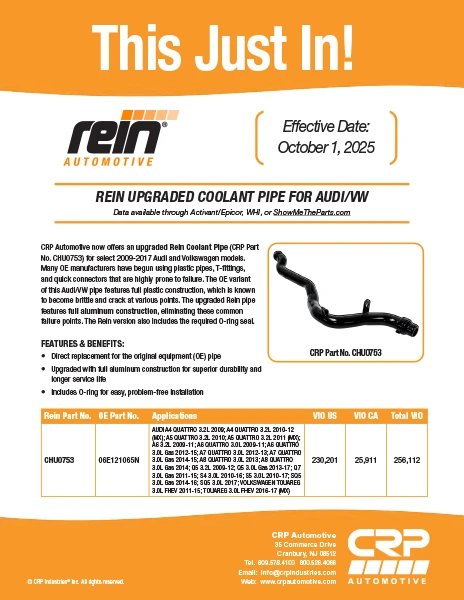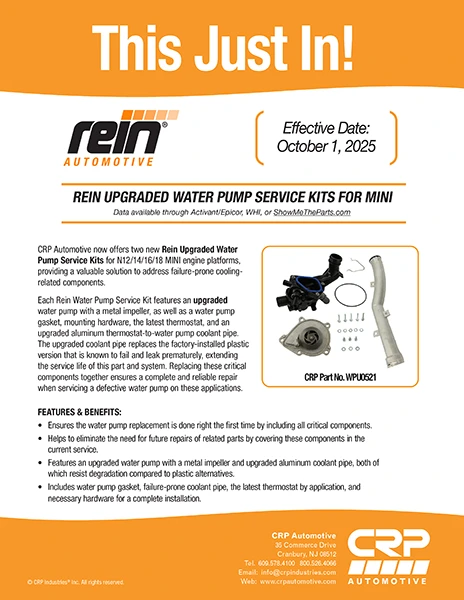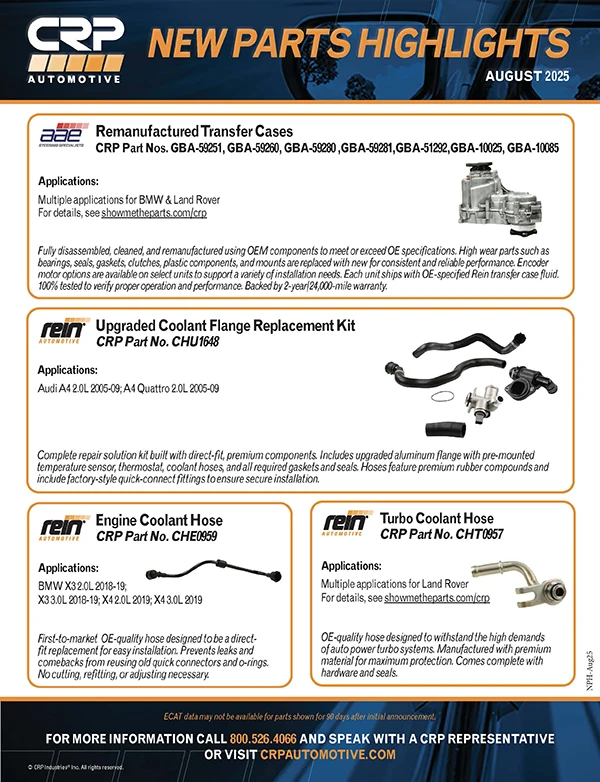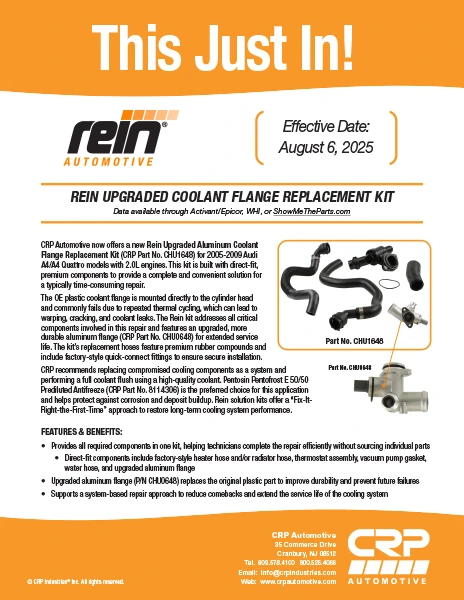In this episode of Inside the Brands, CRP’s Mark Malone shares a few tips regarding antifreeze, including why you should test it for voltage?
If you’re asking yourself “”Why would I ever check my coolant for electricity?”, there’s actually a very good reason.
Sometimes stray electrical charges can make their way into the cooling system, which causes electrolysis of the coolant itself. This breakdown of the fluid can lead to premature corrosion of cooling system components. Believe it or not, the conductivity may also be a direct result of using low-quality antifreeze that leads to corrosion and the corrosion particulates only increase the conductivity.
So, our first tip is:
If you know that a vehicle’s grounds are good, the coolant voltage should not be more than 0.1 volts. If it’s 0.3 volts or higher, you’ll definitely want to replace the coolant.
Here’s a second tip:
Sometimes people think that having a higher percentage of antifreeze in your cooling system is better. Which, on the surface, sort of makes sense. But while there are special antifreeze formulations designed to be run waterless — with most antifreeze, anything above 70% and the freezing point actually starts to rise. So 50-50 antifreeze to water is still the best ratio for coolant designed to be used 50-50.
Here’s our final tip for today:
It’s pretty simple. Namely, there is no such thing as a good “”universal”” coolant anymore.
That green fluid our parents used to use contained fast acting, but short-lived corrosion inhibitors and needed to be flushed and replaced every 2-3 years. Also, having the wrong chemistry/inhibitors can cause damage to your cooling system. So, instead of topping off with “”universal”” coolant, always be sure to use the correct specification antifreeze for a given application.










